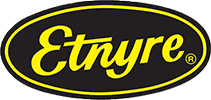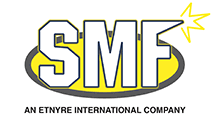Perforated Metal vs. Wire Mesh and Expanded Metal
Filtration and separation technologies are critical to many applications that cover a broad cross-section of consumer and industrial products. Whether it’s a heat-sensitive computer that depends on air circulation to keep it operating, a durable method of separating particles within the mining industry, or an effective method of filtering out mash during craft beer production, there are literally millions of uses for filtration and separation that touch our day-to-day lives. Filtration and separation can apply to:
- Air
- Light
- Gases or fumes
- Sound
- Sorting and classifying
- And more
When it comes to filtration methods that require strength, heat-resistance, and durability, three forms of metal make up the vast majority of solutions for these requirements: perforated metal, expanded metal and wire mesh. Each type offers effective filtration. However, there are different properties and qualities of each that should be considered when determining which is optimal for an application.
Below, we’ll examine each type of solution and its properties.
Perforated Sheet Metal: Perforated metal is metal that has had holes or openings punched through it, either via an “all-across” press or another method such as CNC punching or laser cutting. The unique qualities of perforated metal for filtration or separation include:
- Versatility: Perforated metal offers the greatest overall versatility in pattern, shape, material type and hole gauge among the three materials discussed here. When the amount of open area (the “hole” that allows the passage of air, light, liquids, etc.) is critical to the efficient operation of the application, perforated metal can provide the greatest control of open area. Different press tooling and other cutting methods are available to meet nearly any hole or perforation configuration required. Another important difference worth mentioning is that the perforating manufacturing process provides the flexibility to leave certain areas without holes. For example, a section of solid surface can be a design requirement to prevent filtration in an exact location or provide a solid mounting surface in a specific place.
- Strength: While all three methods offer high structural strength, perforated metal is the only method that can be freestanding. This is because perforated metal can be manufactured with “non-perforated” borders at its outer edges, providing greater stability. Expanded metal and wire mesh must be attached to stabilizing frames. When increased strength is needed, metal can be perforated in a variety of materials and thicknesses, where the others are limited. For example, perforated metal is available in steel plate up to 1” thick or stainless steel up to ¼” thick.
- Weight: Since material is removed during the manufacturing process, perforated metal will weigh much less than expanded metal when using comparative materials. Further, it has great strength to weight ratio properties, meaning the weight is lowered but the strength is not significantly compromised. This is an important distinction for weight sensitive applications.
- Aesthetic Appeal: Perforated metal can come in a variety of hole sizes and holes in a number of shapes: circles, squares, diamonds and other geometric figures, with high levels of complexity. When design is as important as function, perforated metal will often be the right choice.
Expanded Metal: Expanded metal is produced by cutting a pattern of slits in metal coil, then stretching (or “expanding”) it so that the slits become diamond-shaped holes. Expanded metal is typically a thinner material than the other methods described here due to the nature of the process. However, this metal type offers a number of advantages and unique properties.
- Configuration options: Although the distinctive diamond-shaped pattern of expanded metal cannot be changed, expanded metal pieces can be configured in different ways. Standard expanded metal retains a three-dimensional raised, slightly twisted configuration of the piece after the stretching process. The metal can be further processed to flatten any strands of the diamond configuration that may be raised or at an angle. Also, expanded metal can be slit in a unique pattern for a more aesthetically pleasing appearance.
- Strength: The one-piece construction, along with the configuration of the diamond shapes, provides a great deal of structural integrity. Expanded metal is often used for industrial uses such as flooring, steps, walls and gates for this reason.
Wire Mesh: Wire mesh can be of woven (interlocked) or welded construction. In either case, wire mesh consists of strands of metal wire fastened together to form a mesh sheet. Some unique properties of wire mesh include:
- Flexibility: Wire mesh is also sometimes called “wire cloth,” and it can be woven in such a way that it provides the same flexibility of cloth. For applications where a non-rigid construction is required, with the same filtration properties of metal, wire mesh is often the right choice.
- Gauge and construction versatility: Wire mesh can be manufactured with large openings (for applications such as fences) or nearly invisible openings (when higher rates of filtration are required). In addition, wire mesh offers some flexibility in opening shapes, though not as many options as perforated metal.
A final word about costs…typically, expanded metal is the least expensive of the three options. However, there are factors to consider that can negate any savings:
- Functionality of the product must be considered first. When an application requires specific control of lighting or acoustical control, expanded metal or wire cloth does not offer the same hole pattern control as perforated metal to meet the required performance.
- Fabrication steps can be reduced for perforated metal. As mentioned earlier, perforated metal is free-standing off-the-press so it can eliminate additional fabrication methods such as welding to attach it to a frame.
While each type of metal--perforated metal, wire mesh and expanded metal all have unique strengths, it’s important to understand the specific requirements of the application in order to determine which will work best for you.
If you are working on a project and are unsure of what type of metal to use, our team at Hendrick is ready to help. Contact us today!








